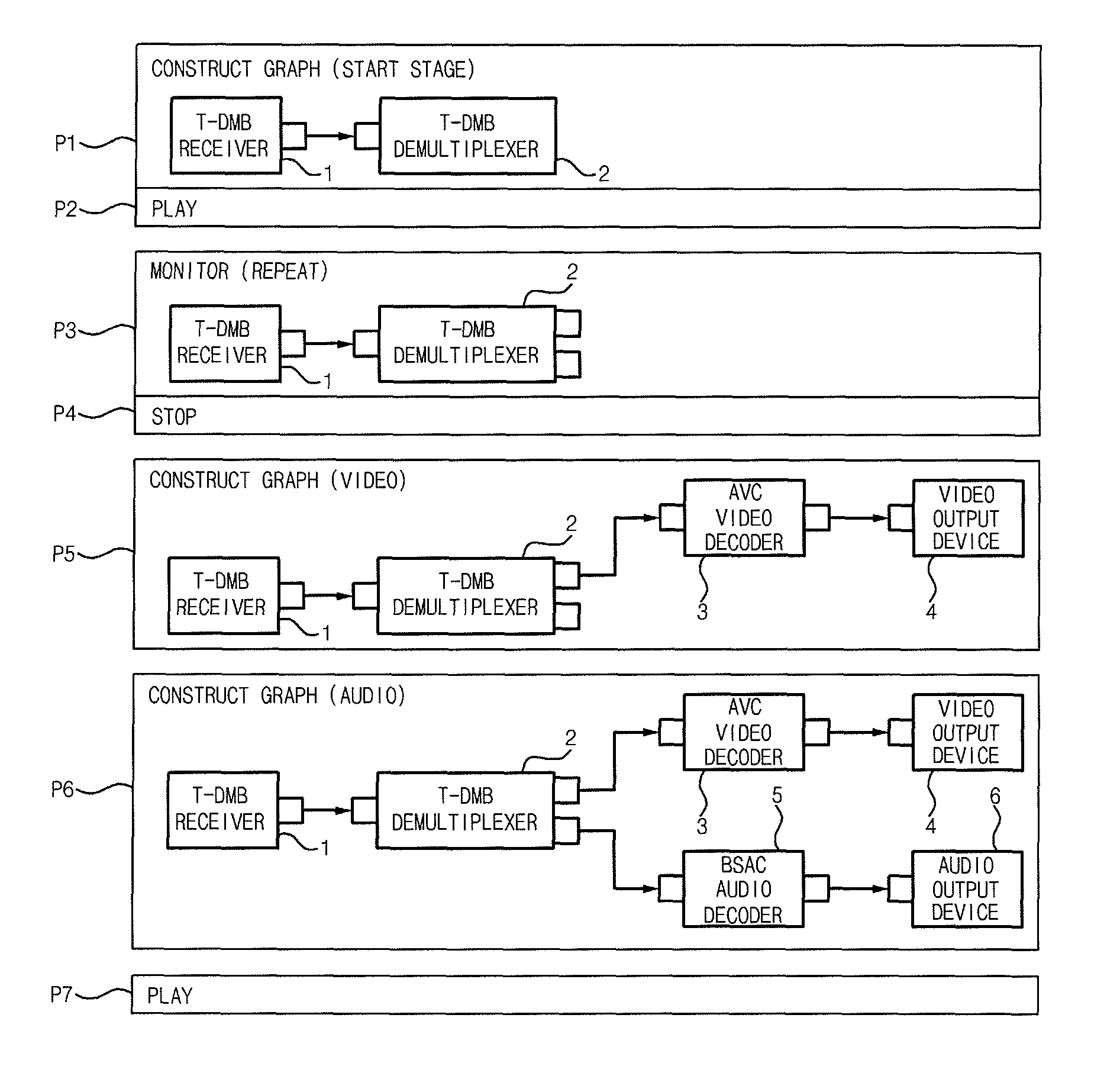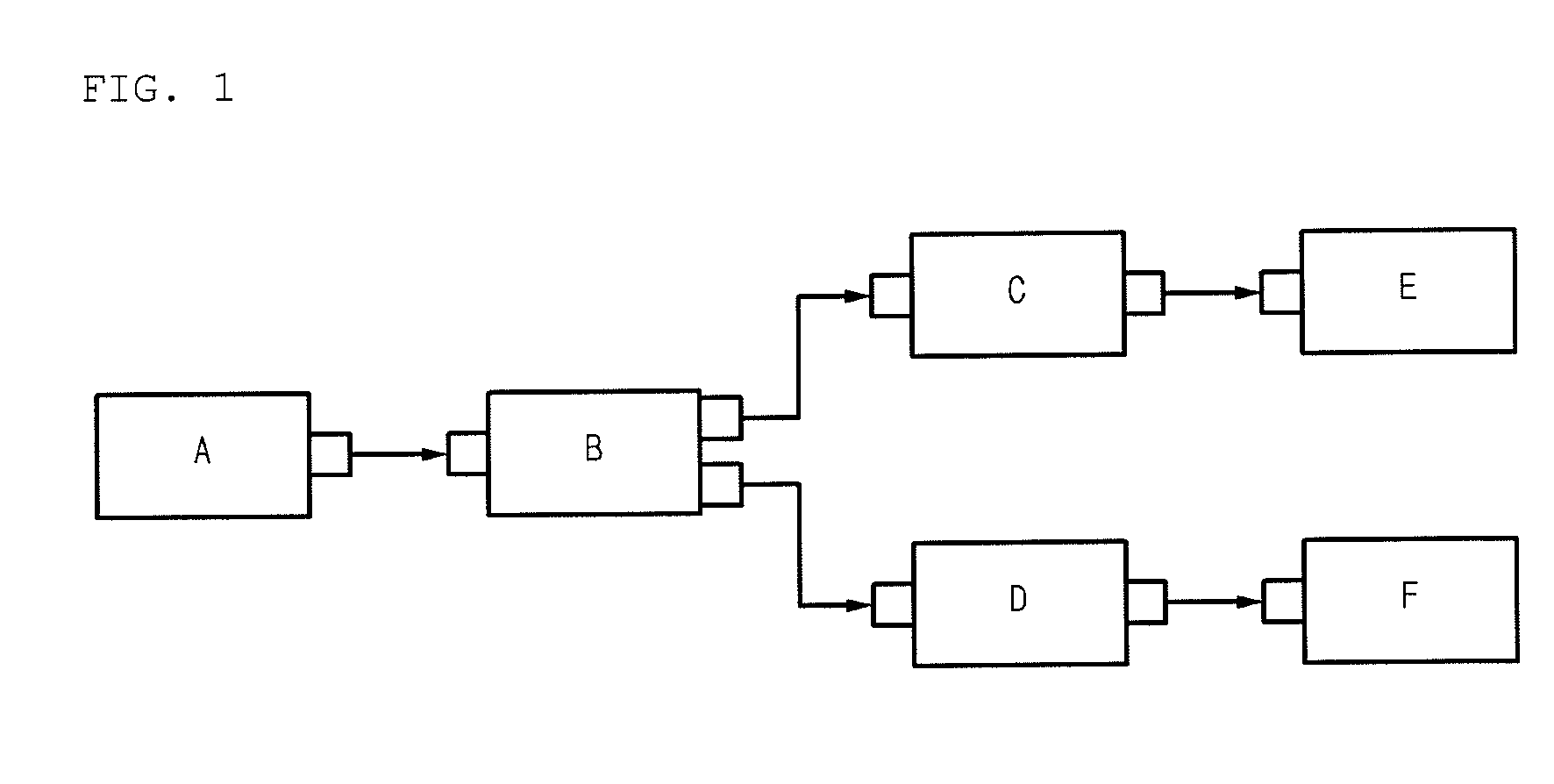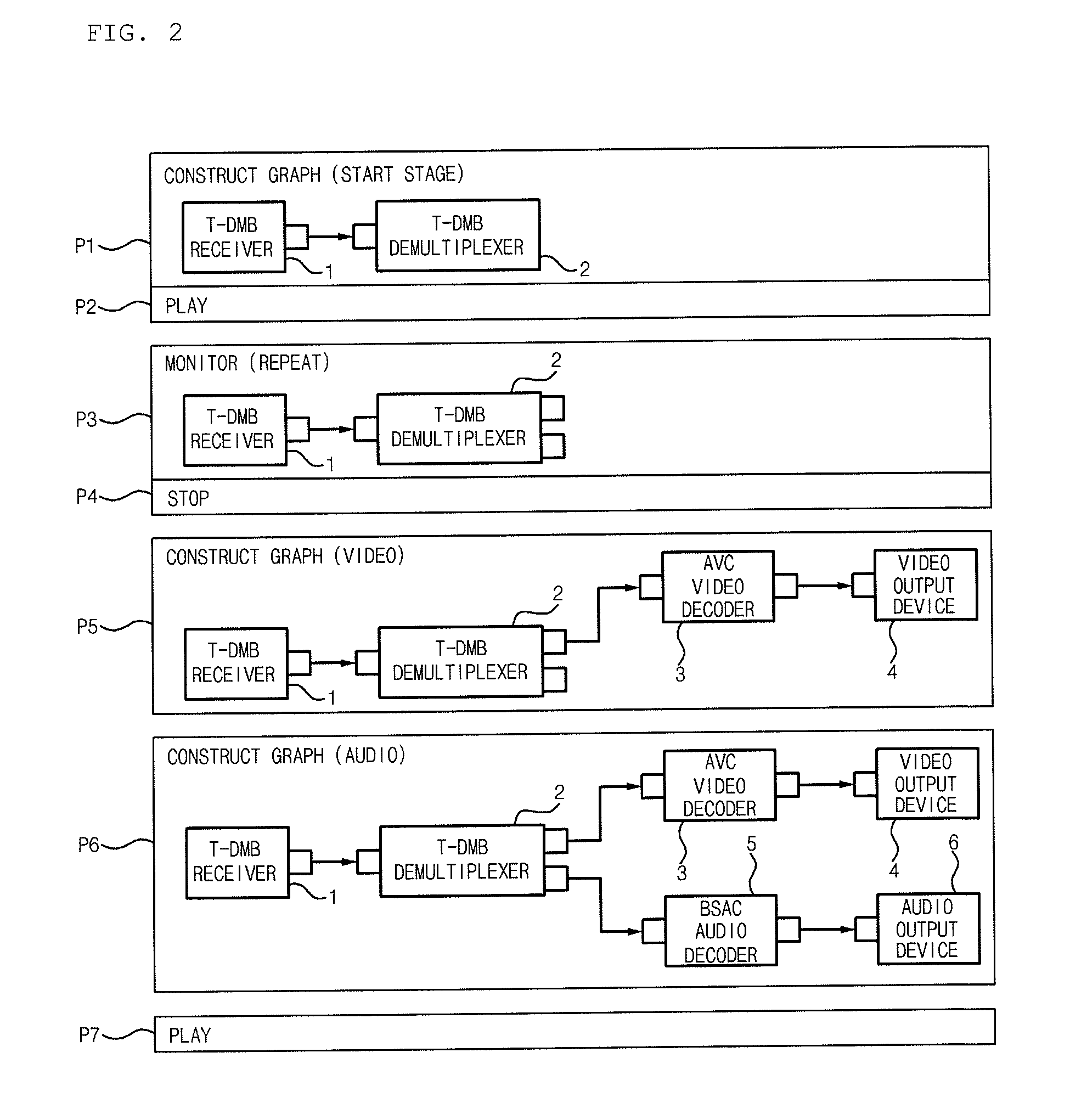Multimedia-data-processing method
a multi-media data and processing method technology, applied in the field of multi-media data processing methods, can solve the problems of slow media graph construction, large amount of resources including power, according to a characteristic of the mobile environment, etc., to improve the stability of the media application, reduce latent errors, and reduce resources. the effect of consumption
- Summary
- Abstract
- Description
- Claims
- Application Information
AI Technical Summary
Benefits of technology
Problems solved by technology
Method used
Image
Examples
Embodiment Construction
Technical Problem
[0020]Accordingly, the present invention has been made to solve the above-mentioned problems occurring in the prior art, and the present invention provides a method of processing multimedia data by a media framework, which enables a media graph to be always constructed in a “connection without negotiation” manner based on an already known media graph construction, thereby minimizing procedures required for component connection, and in which a connection denial incapability component included in the media graph may rapidly and efficiently determine a possibility of the data reception, thereby improving a performance of a system and satisfying demands of an OS platform builder and a media application developer.
Technical Solution
[0021]In accordance with an aspect of the present invention, there is provided a method of processing multimedia data by a multimedia framework, which allows a media application to omit checking of a construction of a media graph, the method in...
PUM
| Property | Measurement | Unit |
|---|---|---|
| weight | aaaaa | aaaaa |
| power | aaaaa | aaaaa |
| flexibility | aaaaa | aaaaa |
Abstract
Description
Claims
Application Information
 Login to View More
Login to View More - R&D
- Intellectual Property
- Life Sciences
- Materials
- Tech Scout
- Unparalleled Data Quality
- Higher Quality Content
- 60% Fewer Hallucinations
Browse by: Latest US Patents, China's latest patents, Technical Efficacy Thesaurus, Application Domain, Technology Topic, Popular Technical Reports.
© 2025 PatSnap. All rights reserved.Legal|Privacy policy|Modern Slavery Act Transparency Statement|Sitemap|About US| Contact US: help@patsnap.com



